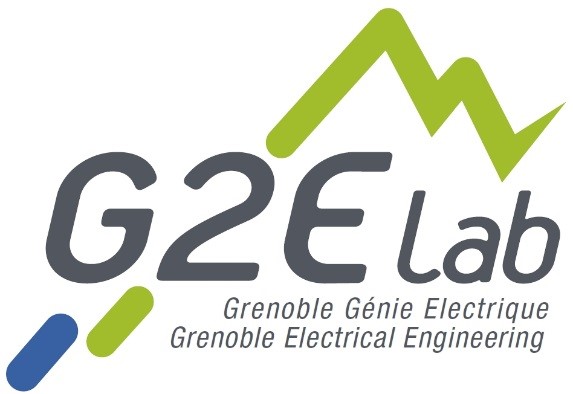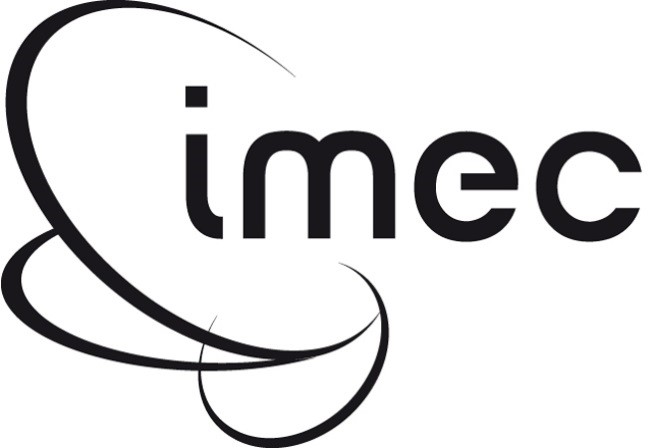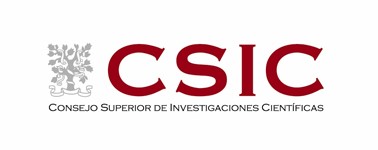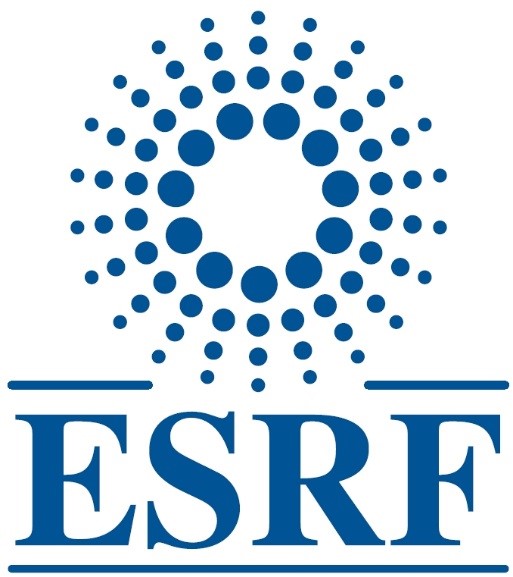Centre National de la Recherche Scientifique – Institut Néel, France
 Institut Néel is the largest research laboratory set up by CNRS in physics, dedicated to research in condensed matter physics, enriched with interdisciplinary activities at the interface of both chemical engineering and biology. It is a UPR “Unité propre de Recherche” of the CNRS. Organized into three strongly interacting departments, its 19 research teams benefit from exceptional technical expertise. The laboratory is actively involved in the promotion of its results, through partnerships with industry and also in synergy with the academic world.
Institut Néel is the largest research laboratory set up by CNRS in physics, dedicated to research in condensed matter physics, enriched with interdisciplinary activities at the interface of both chemical engineering and biology. It is a UPR “Unité propre de Recherche” of the CNRS. Organized into three strongly interacting departments, its 19 research teams benefit from exceptional technical expertise. The laboratory is actively involved in the promotion of its results, through partnerships with industry and also in synergy with the academic world.
Centre National de la Recherche Scientifique – G2ELab, France
 Merging the former LEG (Grenoble Power Electrical Laboratory), LEMD (Laboratory of Electrostatics and Dielectric Materials), and LMN (Laboratory of Magnetism of the Ship) in 2007, G2Elab nowadays covers a wide spectrum of expertise in the field Electrical Engineering. It is a UMR “Unité Mixte de Recherche” between CNRS and UJF. Its activity can be summarized by the following keywords: electrical energy, materials, innovative processes and systems, modeling and design methods and software. The research carried out in G2Elab ranges from long term research up to collaborative research supported by a strong involvement in partnerships with large companies and SMEs. With more than 100 permanent staff, 110 PhD and 50 Masters, G2Elab appears as a major actor both nationally and internationally in these areas.
Merging the former LEG (Grenoble Power Electrical Laboratory), LEMD (Laboratory of Electrostatics and Dielectric Materials), and LMN (Laboratory of Magnetism of the Ship) in 2007, G2Elab nowadays covers a wide spectrum of expertise in the field Electrical Engineering. It is a UMR “Unité Mixte de Recherche” between CNRS and UJF. Its activity can be summarized by the following keywords: electrical energy, materials, innovative processes and systems, modeling and design methods and software. The research carried out in G2Elab ranges from long term research up to collaborative research supported by a strong involvement in partnerships with large companies and SMEs. With more than 100 permanent staff, 110 PhD and 50 Masters, G2Elab appears as a major actor both nationally and internationally in these areas.
Commissariat à l’Energie Atomique – CEA, France
 CEA LIST is one of the institutes of CEA, the French Atomic Energy Commission. CEA LIST develops innovative technology combining software and hardware design and control of the complexity of systems with high level of integration. Labelled Carnot Institute and technological research laboratory, the LIST highlights synergy R & D between industrial and basic research, in a dynamic that goes up to preindustrial demonstrator system concept. Culture project, strong and well-established researchers from the LIST, in fact the natural Partner of industrialists in the emergence of new technologies. Long-time, they were able to meet the requirements of manufacturers of nuclear energy, in terms of performance, security, period. They study and develop, today, solutions adapted to the needs of many sectors of the economy, including automotive, industrial aeronautics, defense, medical and communication.
CEA LIST is one of the institutes of CEA, the French Atomic Energy Commission. CEA LIST develops innovative technology combining software and hardware design and control of the complexity of systems with high level of integration. Labelled Carnot Institute and technological research laboratory, the LIST highlights synergy R & D between industrial and basic research, in a dynamic that goes up to preindustrial demonstrator system concept. Culture project, strong and well-established researchers from the LIST, in fact the natural Partner of industrialists in the emergence of new technologies. Long-time, they were able to meet the requirements of manufacturers of nuclear energy, in terms of performance, security, period. They study and develop, today, solutions adapted to the needs of many sectors of the economy, including automotive, industrial aeronautics, defense, medical and communication.
Contributing to the transfer of innovative technologies, CEA LIST has promoted particular wealth creation by the emergence of companies. The LIST teams are in relation to many university laboratories, schools and other research organizations (CNRS, INSERM, etc.), through collaborations integrating complementary skills. Teams from CEA LIST are also recognised at international level (expertise, European projects, conferences and expert and standardization committees). The structure of CEA also offers very strong support for administrative duties in the management of projects, with ISO 9001 certification via regular auditing. CEA has also obtained the Carnot label in 2007 demonstrating its strong dynamics in industrial research.
Interuniversitair Micro-Electronica Centrum vzw – IMEC, Belgium
 IMEC is a one of the world leading independent RTD in nanoelectronics and nanotechnology with 2000 staff and year turn over > 300 Mil Euro. IMEC research focuses on the next-generation of chips and systems, and on the enabling technologies for ambient intelligence. IMEC is headquartered in Leuven, Belgium, and has offices in Belgium, the Netherlands, Taiwan, US, China, India and Japan. IMEC’s research bridges the gap between fundamental research at universities and technology development in industry. Its unique balance of processing and system know-how, intellectual property portfolio, state of the art infrastructure and a strong network of companies, universities and research institutes worldwide, positions IMEC as a key partner in R&D projects. The associated laboratory IMOMEC is located at the Campus Diepenbeek of Hasselt University and has about 150 staff working mainly on novel nanomaterials and nanoscale architectures. IMOMEC is a division of IMEC, closely collaborating with the Hasselt University, focussing on plastic electronics, organic materials synthesis, wide band gap materials, metal oxide nanomaterials, biosensors, nanostructures physics, molecular electronics and materials characterisation techniques. One of the important topics at IMOMEC with more than 20 years tradition is CVD diamond films, an activity that is being led by Prof Ken Haenen and Prof Miloš Nesládek
IMEC is a one of the world leading independent RTD in nanoelectronics and nanotechnology with 2000 staff and year turn over > 300 Mil Euro. IMEC research focuses on the next-generation of chips and systems, and on the enabling technologies for ambient intelligence. IMEC is headquartered in Leuven, Belgium, and has offices in Belgium, the Netherlands, Taiwan, US, China, India and Japan. IMEC’s research bridges the gap between fundamental research at universities and technology development in industry. Its unique balance of processing and system know-how, intellectual property portfolio, state of the art infrastructure and a strong network of companies, universities and research institutes worldwide, positions IMEC as a key partner in R&D projects. The associated laboratory IMOMEC is located at the Campus Diepenbeek of Hasselt University and has about 150 staff working mainly on novel nanomaterials and nanoscale architectures. IMOMEC is a division of IMEC, closely collaborating with the Hasselt University, focussing on plastic electronics, organic materials synthesis, wide band gap materials, metal oxide nanomaterials, biosensors, nanostructures physics, molecular electronics and materials characterisation techniques. One of the important topics at IMOMEC with more than 20 years tradition is CVD diamond films, an activity that is being led by Prof Ken Haenen and Prof Miloš Nesládek
Fraunhofer Gesellschaft zur Förderung der angewandten Forschung e. V. – IAF Fraunhofer, Germany
 The Fraunhofer IAF is a leading science and technology centre in the field of micro and nanostructured compound semiconductors and devices made from synthetic diamond. Research and development is focused on micro and optoelectronic circuits, modules and systems for applications in safety, security and communication systems as well as for medical applications and environmental protection. The institute features a cutting-edge semiconductor process line, thus being able to provide leading edge devices, circuits and modules with the highest functionalities as prototypes or in small quantities. Our national and international partners in research and technology are the Federal Ministry of Defence (BMVg), the Federal Ministry of Education and Research (BMBF), national state governments, the European Commission, and industrial enterprises. The Institute was founded in 1957 and now has a total staff of 280 scientists, engineers and technicians. Our annual budget amounts to 31 million €. The IAF is one of the 60 research institutes of the Fraunhofer-Gesellschaft and is member of the Fraunhofer
The Fraunhofer IAF is a leading science and technology centre in the field of micro and nanostructured compound semiconductors and devices made from synthetic diamond. Research and development is focused on micro and optoelectronic circuits, modules and systems for applications in safety, security and communication systems as well as for medical applications and environmental protection. The institute features a cutting-edge semiconductor process line, thus being able to provide leading edge devices, circuits and modules with the highest functionalities as prototypes or in small quantities. Our national and international partners in research and technology are the Federal Ministry of Defence (BMVg), the Federal Ministry of Education and Research (BMBF), national state governments, the European Commission, and industrial enterprises. The Institute was founded in 1957 and now has a total staff of 280 scientists, engineers and technicians. Our annual budget amounts to 31 million €. The IAF is one of the 60 research institutes of the Fraunhofer-Gesellschaft and is member of the Fraunhofer
Alliance for Microelectronics (VμE) and the Fraunhofer Alliance for Defence and Security Research (VVS). The Diamond Research Team is led by C.E. Nebel and consists of 12 members. The diamond laboratory is equipped with 8 plasma enhanced CVD (PECVD) reactors (diamond growth), state of the art technology and characterization tools.
University College London – UCL, United Kingdom
 UCL is one of the UK’s premier Universities located in the heart of London. The Diamond Electronics Group (DEG) operates within both UCL’s Department of Electronic and Electrical Engineering (EEE) and the London Centre for Nanotechnology (LCN), a joint venture between UCL and Imperial College London, based on UCL’s campus. Within EEE, AFM, STM, UV-Vis, FTIR, PL and Raman facilities are available for materials characterisation throughout GreenDiamond. The LCN features a fully equipped ‘class 100’ 220m2 cleanroom, and state-of-the-art FIB, e-beam and SPM facilities. The Diamond Electronics Group holds expertise within the field of electronic characterisation and fabrication of devices from diamond, and has a good track record in technology transfer, having licensed diamond device designs to EU industry, and having supplied diamond devices for use on the UK submarine fleet.
UCL is one of the UK’s premier Universities located in the heart of London. The Diamond Electronics Group (DEG) operates within both UCL’s Department of Electronic and Electrical Engineering (EEE) and the London Centre for Nanotechnology (LCN), a joint venture between UCL and Imperial College London, based on UCL’s campus. Within EEE, AFM, STM, UV-Vis, FTIR, PL and Raman facilities are available for materials characterisation throughout GreenDiamond. The LCN features a fully equipped ‘class 100’ 220m2 cleanroom, and state-of-the-art FIB, e-beam and SPM facilities. The Diamond Electronics Group holds expertise within the field of electronic characterisation and fabrication of devices from diamond, and has a good track record in technology transfer, having licensed diamond device designs to EU industry, and having supplied diamond devices for use on the UK submarine fleet.
The UCL team brings to GreenDiamond the capability to characterise the electronic quality of the differing forms of diamond that will be explored within the project, and nano-structuring tools for device development. In the case of electronic characterisation, Impedance Spectroscopy (IS) and Hall effect measurements can assess carrier transport characteristics (15-800K), in addition to the use of I-V and C-V characterisation of devices for the extraction of physical parameters for modelling and diode/transistor DC device characterisation. Photo- and e-beam lithography, reactive ion-etching (SRIE and DRIE), PECVD and metallisation are all key device fabrication steps which the UCL team brings to GreenDiamond.
University of Cambridge, Department of Engineering – UCAM, United Kingdom
 University of Cambridge has developed an international standing for advances in science and technology over a period of 800 years. Its reputation can be measured by more than 70 Nobel prizes and other prestigious awards in Physics, Mathematics, Engineering, Medicine and other disciplines. The Department of Engineering is a leading international centre for research and gained the highest possible ranking in the latest assessment of research achievements in British Universities. The Department of Engineering was also ranked first in its class in Europe according to other independent surveys. The Department comprises approximately 2000 members of staff and students. The HVMS (High Voltage Microelectronics and Sensors) group has an international reputation with more than 500 articles published in international journals and conferences and over 70 patents. It has been sponsored throughout by the industrial and public grants with more than 5 M Euro. There have been three spin-offs from the group, two being in power electronics and employing over 70 people with multi-million pound annual revenue. UCAM will bring along its 20 years of experience and knowledge in power devices and wide bandgap materials.
University of Cambridge has developed an international standing for advances in science and technology over a period of 800 years. Its reputation can be measured by more than 70 Nobel prizes and other prestigious awards in Physics, Mathematics, Engineering, Medicine and other disciplines. The Department of Engineering is a leading international centre for research and gained the highest possible ranking in the latest assessment of research achievements in British Universities. The Department of Engineering was also ranked first in its class in Europe according to other independent surveys. The Department comprises approximately 2000 members of staff and students. The HVMS (High Voltage Microelectronics and Sensors) group has an international reputation with more than 500 articles published in international journals and conferences and over 70 patents. It has been sponsored throughout by the industrial and public grants with more than 5 M Euro. There have been three spin-offs from the group, two being in power electronics and employing over 70 people with multi-million pound annual revenue. UCAM will bring along its 20 years of experience and knowledge in power devices and wide bandgap materials.
University of Cadiz – UCA, Spain
 The University of Cadiz is located on the Atlantic coast in the South of Spain (Andalusia region). Around 20 000 students are pursuing their studies in the different specialities and in particular in the Science Faculty and Engineering School. In investigation, it is one of the three most important centers in electron microscopy in Spain. In particular, with the installation of a new FEI-TITAN3 double Cs corrected microscope, one of the top 10 European machine, this speciality is strongly reinforced. Around 25 stable position investigators are active around the electron microscopy facilities center (Central facilities). Among them, 15 in the materials science and engineering field, 8 dedicated to semiconducting materials and 3 on diamond related aspects. Optical and electrical characterisation facilities with 4 stable position investigator complete the group dedicated to diamond material growth characterization.
The University of Cadiz is located on the Atlantic coast in the South of Spain (Andalusia region). Around 20 000 students are pursuing their studies in the different specialities and in particular in the Science Faculty and Engineering School. In investigation, it is one of the three most important centers in electron microscopy in Spain. In particular, with the installation of a new FEI-TITAN3 double Cs corrected microscope, one of the top 10 European machine, this speciality is strongly reinforced. Around 25 stable position investigators are active around the electron microscopy facilities center (Central facilities). Among them, 15 in the materials science and engineering field, 8 dedicated to semiconducting materials and 3 on diamond related aspects. Optical and electrical characterisation facilities with 4 stable position investigator complete the group dedicated to diamond material growth characterization.
Agencia Estatal Consejo Superior De Investigaciones Scientificas – CSIC-CNM, Spain
 is a non-profit Spanish research Institute belonging to the Spanish Science Research Council (CSIC). The CNM-CSIC activities are channelled toward strengthening microelectronics capability in Spain by means of R&D on the design and fabrication of MEMS, ICs, power devices and related materials as well as to provide technological support to industry and university research groups.
is a non-profit Spanish research Institute belonging to the Spanish Science Research Council (CSIC). The CNM-CSIC activities are channelled toward strengthening microelectronics capability in Spain by means of R&D on the design and fabrication of MEMS, ICs, power devices and related materials as well as to provide technological support to industry and university research groups.
Tecnalia Research & Innovation Foundation – Tecnalia, Spain
 Fundación TECNALIA Research & Innovation (Tecnalia) is the largest private research and technology entity in Spain and the fifth largest in Europe, employing 1408 people (195 of them PhD holders). Tecnalia is organised into six main different Divisions that operate in the fields of Industry and Transport, Information and Communication Technologies, Building, Energy and Environment, Innovation Systems and Health and Quality of Life. Tecnalia was very active in FP7, participating in 353 projects and coordinating 76 of them and its turnover was 96 M€ in 2013. In the field of Intellectual Property Rights, Tecnalia has 24 patents pending, 108 patents granted and 3 patents licensed, with a return of 2M€ per year.
Fundación TECNALIA Research & Innovation (Tecnalia) is the largest private research and technology entity in Spain and the fifth largest in Europe, employing 1408 people (195 of them PhD holders). Tecnalia is organised into six main different Divisions that operate in the fields of Industry and Transport, Information and Communication Technologies, Building, Energy and Environment, Innovation Systems and Health and Quality of Life. Tecnalia was very active in FP7, participating in 353 projects and coordinating 76 of them and its turnover was 96 M€ in 2013. In the field of Intellectual Property Rights, Tecnalia has 24 patents pending, 108 patents granted and 3 patents licensed, with a return of 2M€ per year.
European Synchrotron Radiation Facility – ESRF, France
 The European Synchrotron Radiation Facility (ESRF) is the most powerful synchrotron X-ray source in Europe. The ESRF is a French Société civile subject to French law but funded with an annual budget of ~100M€ and access to its beamlines shared by the 20 member states. Funding of a major upgrade programme of this synchrotron source over the next five years has just been agreed. It is located in Grenoble at the European Photon and Neutron Campus. As a member of the EIROforum, the ESRF works with research institutions across Europe to support the development of the European Research Area and to promote science education. Each year several thousand researchers visit ESRF to exploit its intense X-ray beams: these illuminate and interact with samples of materials being studied. Access to the facility is after peer review of selected research proposals by international committees; limited direct access for industry is also made available on a paid basis, notably in the fields of pharmaceuticals, consumer products, petrochemicals and microelectronics.
The European Synchrotron Radiation Facility (ESRF) is the most powerful synchrotron X-ray source in Europe. The ESRF is a French Société civile subject to French law but funded with an annual budget of ~100M€ and access to its beamlines shared by the 20 member states. Funding of a major upgrade programme of this synchrotron source over the next five years has just been agreed. It is located in Grenoble at the European Photon and Neutron Campus. As a member of the EIROforum, the ESRF works with research institutions across Europe to support the development of the European Research Area and to promote science education. Each year several thousand researchers visit ESRF to exploit its intense X-ray beams: these illuminate and interact with samples of materials being studied. Access to the facility is after peer review of selected research proposals by international committees; limited direct access for industry is also made available on a paid basis, notably in the fields of pharmaceuticals, consumer products, petrochemicals and microelectronics.
Ion Beam Services – IBS, France
 IBS is the European leader for ion implantation equipments and services. Since 1987, IBS provides a wide range of foundry services on various substrates and sizes, as well as a series of ion implantation equipments. IBS have a full range of manufacturing components for specific powers on silicon, SiC and diamond. IBS joined in 2 R&D diamond programs DIAMONIX and DIAMONIX2.
IBS is the European leader for ion implantation equipments and services. Since 1987, IBS provides a wide range of foundry services on various substrates and sizes, as well as a series of ion implantation equipments. IBS have a full range of manufacturing components for specific powers on silicon, SiC and diamond. IBS joined in 2 R&D diamond programs DIAMONIX and DIAMONIX2.
Camutronics – CAMU, United Kingdom
 Cambridge Microelectronics Ltd – Camutronics (SME) is a Cambridge University spin-off founded in 2012 by 2 professors and 3 PhD alumni with >20 years of experience in designing, optimising and fabricating high voltage devices in Si, SiC, Diamond and GaN from lateral, CMOS-compatible 20V rated MOSFETs to 800V lateral IGBTs and up to 6.5kV vertical GCTs and IGBTs. The founders of Camutronics have been working together for more than 10 years on developing and optimising novel high voltage devices and technologies and releasing them into high volume production. Several products using novel semiconductor technologies have been designed from scratch, optimised and qualified by the Camutronics team. They are very prolific semiconductor device designers – in total, they are named inventors in more than 100 patents.
Cambridge Microelectronics Ltd – Camutronics (SME) is a Cambridge University spin-off founded in 2012 by 2 professors and 3 PhD alumni with >20 years of experience in designing, optimising and fabricating high voltage devices in Si, SiC, Diamond and GaN from lateral, CMOS-compatible 20V rated MOSFETs to 800V lateral IGBTs and up to 6.5kV vertical GCTs and IGBTs. The founders of Camutronics have been working together for more than 10 years on developing and optimising novel high voltage devices and technologies and releasing them into high volume production. Several products using novel semiconductor technologies have been designed from scratch, optimised and qualified by the Camutronics team. They are very prolific semiconductor device designers – in total, they are named inventors in more than 100 patents.
Wavestone, Luxembourg (formerly Kurt Salmon)
![]() Wavestone is a new major independent actor on the consulting market. We join together two established and well-known consulting companies, strengthened with 25 years of experience and coming from two different worlds (the world of Big4 for one, and the technology eco system for the other). We rely on a force of 2.500 employees, spread across 4 continents, with the capacity to operate in a synchronized manner across all of our locations. Within WAVESTONE, the Innovation Management & Funding (IMF) department is specialized in assisting companies and public institutions with all aspects of public funding granted for complex projects. The team of 45 specialists is spread across Europe and combines local, national and EU coverage of funding programmes. IMF’s specialists combine several decades of experience in setting-up complex projects, obtaining public funding for them and then managing administrative and collaborative matters in order to ensure smooth operation and reporting. In the field of R&D and innovation, IMF experience has been applied to consortia ranging from 4 to 35 partners, with public funding ranging from 1 to 25 million Euros, granted from leading European and national programmes (FP7, H2020, IMI, ENIAC, LIFE, Eco-innovation, structural funds, etc.).
Wavestone is a new major independent actor on the consulting market. We join together two established and well-known consulting companies, strengthened with 25 years of experience and coming from two different worlds (the world of Big4 for one, and the technology eco system for the other). We rely on a force of 2.500 employees, spread across 4 continents, with the capacity to operate in a synchronized manner across all of our locations. Within WAVESTONE, the Innovation Management & Funding (IMF) department is specialized in assisting companies and public institutions with all aspects of public funding granted for complex projects. The team of 45 specialists is spread across Europe and combines local, national and EU coverage of funding programmes. IMF’s specialists combine several decades of experience in setting-up complex projects, obtaining public funding for them and then managing administrative and collaborative matters in order to ensure smooth operation and reporting. In the field of R&D and innovation, IMF experience has been applied to consortia ranging from 4 to 35 partners, with public funding ranging from 1 to 25 million Euros, granted from leading European and national programmes (FP7, H2020, IMI, ENIAC, LIFE, Eco-innovation, structural funds, etc.).
Win Inertia, Spain
 Win Inertia is a high-tech engineering company, highly specialized in Power Electronics, Energy Storage and Communications and Control Electronics. After 7 years of developing technologies, the company has focused its market in the conception, design and development of energy management, optimization and efficiency solutions for the integration of renewables, grid stabilization, weak grids and isolated grids, using a modular energy technology from 10 kW up to 10 MW.
Win Inertia is a high-tech engineering company, highly specialized in Power Electronics, Energy Storage and Communications and Control Electronics. After 7 years of developing technologies, the company has focused its market in the conception, design and development of energy management, optimization and efficiency solutions for the integration of renewables, grid stabilization, weak grids and isolated grids, using a modular energy technology from 10 kW up to 10 MW.

